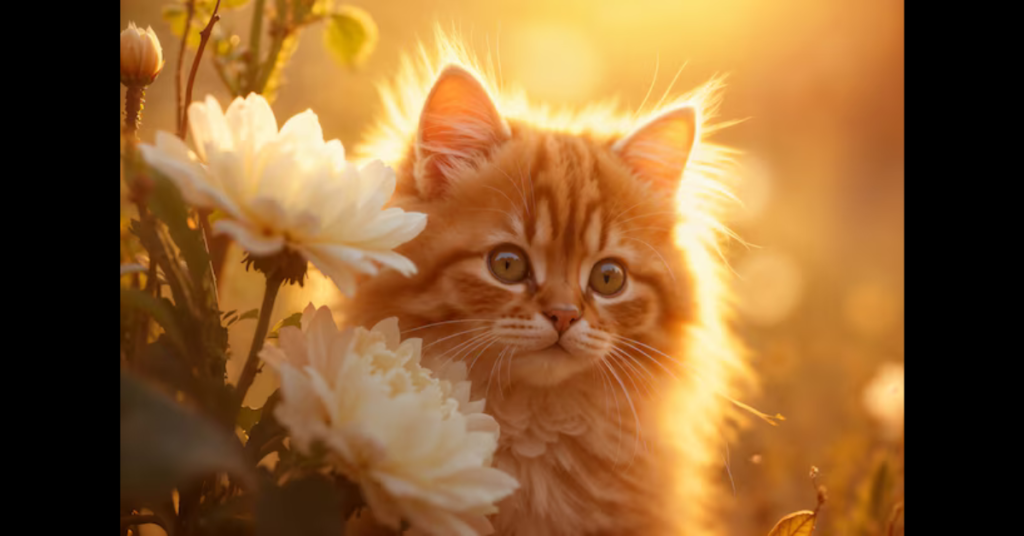The Maine Coon is one of the largest and most beloved cat breeds in the world, often admired for its majestic appearance, friendly disposition, and impressive size. Among the various color variations that Maine Coons come in, the orange Maine Coon stands out as particularly striking. With its rich, fiery coat, the orange Maine Coon is a captivating creature that has enchanted cat lovers for decades. This article delves into the world of the orange Maine Coon, exploring its history, physical traits, personality, care needs, and why it has become such a beloved companion in homes around the globe.
1. The Origins of the Maine Coon
To understand the orange Maine Coon, it is essential to start with a look at the breed’s origins. The Maine Coon is believed to have originated in the state of Maine in the northeastern United States, where it adapted to the cold climate and rugged terrain. While the exact origins of the breed are shrouded in mystery, several myths and legends attempt to explain how these majestic cats came to be.
One popular legend suggests that Maine Coons are descendants of long-haired cats that belonged to Marie Antoinette, the ill-fated queen of France. According to the story, she sent her beloved cats to the United States in anticipation of her escape from France during the French Revolution. While this theory is romantic, there is no historical evidence to support it.
Another theory posits that the Maine Coon is the result of natural breeding between domestic short-haired cats and long-haired cats brought by sailors from overseas. These long-haired cats may have been Norwegian Forest Cats or similar breeds, leading to the development of the Maine Coon’s thick coat and robust physique. Regardless of their origins, Maine Coons were well-suited to life in Maine’s harsh winters, and their hardy nature contributed to their survival and eventual popularity.
2. The Orange Maine Coon: A Stunning Color Variation
The orange Maine Coon, often referred to as the “red” Maine Coon in the cat fancy world, is one of the many color variations that Maine Coons can come in. This coloration is caused by a specific gene that results in the production of the red pigment, which gives the cat its distinctive orange hue. The intensity of the orange color can vary, ranging from a deep, rich red to a lighter, more muted orange or cream.
2.1. Coat Patterns
The orange Maine Coon can display several different coat patterns, which add to the breed’s diversity and appeal. Some of the common coat patterns seen in orange Maine Coons include:
- Solid: A solid orange coat with no markings or variations in color.
- Tabby: The tabby pattern is the most common in orange Maine Coons, featuring classic stripes, swirls, or spots. The “mackerel” tabby pattern, with its narrow stripes, is particularly popular.
- Tortoiseshell: While less common, some orange Maine Coons may exhibit a tortoiseshell pattern, combining orange with black or brown patches.
- Bi-Color: In this pattern, the orange coat is accompanied by white markings on the chest, face, paws, or belly.
2.2. Eye Color
Orange Maine Coons often have eye colors that complement their fiery coats. Most orange Maine Coons will have gold, copper, or amber eyes, though some may have green or hazel eyes. The contrast between the orange fur and the cat’s striking eyes adds to its overall allure.
3. Physical Traits of the Orange Maine Coon
The Maine Coon is known for its large, muscular build, and the orange variety is no exception. These cats can grow to impressive sizes, with males typically weighing between 13 and 18 pounds (or more in some cases) and females ranging from 8 to 12 pounds. Some Maine Coons have been known to exceed 20 pounds, making them one of the largest domestic cat breeds.
3.1. Size and Build
Orange Maine Coons have a sturdy, rectangular body shape with broad chests and strong legs. They possess large, tufted paws that are well-suited for walking on snow, a trait that likely developed from their time in the cold climates of Maine. Their tails are long and bushy, often as long as their bodies, and they are carried proudly.
3.2. Coat and Grooming
One of the most distinguishing features of the orange Maine Coon is its luxurious coat. Their fur is long, dense, and water-repellent, making it perfect for cold weather. The coat is shorter on the shoulders and longer on the belly, legs, and tail. Orange Maine Coons also have a ruff of fur around their necks, which gives them a lion-like appearance.
While their coats are beautiful, they do require regular grooming to keep them looking their best. Maine Coons are prone to matting, especially in the areas where their fur is longest, such as the belly and behind the ears. Regular brushing, at least two to three times a week, is essential to prevent tangles and mats. Bathing is generally not necessary unless the cat gets particularly dirty, as Maine Coons are good at keeping themselves clean.
3.3. Lifespan and Health
The average lifespan of an orange Maine Coon is between 12 and 15 years, though with proper care, some can live even longer. While Maine Coons are generally a healthy breed, they are prone to certain genetic health issues, such as:
- Hip Dysplasia: This condition affects the cat’s hip joints and can lead to pain or difficulty walking.
- Hypertrophic Cardiomyopathy (HCM): This is a common heart condition in Maine Coons, where the walls of the heart become thickened, affecting its ability to pump blood efficiently.
- Spinal Muscular Atrophy (SMA): This genetic disorder affects the cat’s muscles and nerves, leading to muscle weakness and mobility issues.
Responsible breeders screen for these conditions, so it’s essential to choose a reputable breeder if you are considering adopting an orange Maine Coon.
4. Personality and Temperament
While the orange Maine Coon’s striking appearance is a major draw, their personality is what makes them truly special. Often described as “gentle giants,” Maine Coons are known for their friendly, social, and affectionate nature. They form strong bonds with their families and are particularly good with children and other pets.
4.1. Sociable and Friendly
Orange Maine Coons are highly sociable cats that enjoy being around people. Unlike some cat breeds that prefer to remain aloof, Maine Coons tend to follow their owners around the house, curious about their activities. They love attention and are known for their playful and sometimes clownish behavior, often engaging in games of fetch or chasing after toys.
Despite their playful nature, orange Maine Coons are not overly demanding of attention. They are content to be near their owners without constantly seeking affection, making them ideal pets for those who want a cat that enjoys companionship without being overly clingy.
4.2. Intelligence and Trainability
Maine Coons, including the orange variety, are highly intelligent cats. They are quick learners and can be trained to perform tricks or follow commands. Many owners have successfully taught their Maine Coons to sit, shake paws, or even walk on a leash. Their intelligence also makes them excellent problem solvers, so providing them with interactive toys and puzzles can help keep their minds sharp.
4.3. Dog-Like Qualities
Orange Maine Coons are often compared to dogs due to their loyal and affectionate nature. They are known for being “people cats” who enjoy spending time with their human companions. Unlike many cats, Maine Coons may greet their owners at the door, follow them from room to room, and even display protective behaviors.
Their dog-like qualities extend to their playfulness as well. Maine Coons are known for their love of fetch, and they will often bring toys back to their owners, eager for another round. This combination of intelligence, loyalty, and playfulness makes the orange Maine Coon an ideal pet for families and individuals alike.
5. Caring for an Orange Maine Coon
Owning an orange Maine Coon requires a commitment to meeting its unique needs, from grooming to diet and exercise. Here are some essential tips for caring for these majestic cats.
5.1. Grooming
As mentioned earlier, the long, thick coat of an orange Maine Coon requires regular grooming to prevent mats and tangles. Brushing the cat’s fur two to three times a week will help remove loose hairs and keep the coat healthy. A metal comb and a slicker brush are ideal tools for this purpose.
In addition to brushing, it’s important to check for any signs of skin irritation, especially around the ears and under the legs. Maine Coons are prone to developing knots in these areas, which can lead to discomfort if not addressed.
5.2. Diet and Nutrition
Like all cats, orange Maine Coons require a balanced diet to maintain their health. Due to their large size, Maine Coons may need more food than smaller breeds, but it’s essential to monitor their weight to prevent obesity. High-quality cat food with a balance of protein, fat, and essential vitamins and minerals is ideal for maintaining the cat’s coat, muscle mass, and overall health.
It’s also a good idea to provide your orange Maine Coon with both wet and dry food to ensure proper hydration and dental health. Maine Coons can be prone to dental issues, so regular dental care, such as brushing their teeth or providing dental treats, can help keep their teeth and gums healthy.







